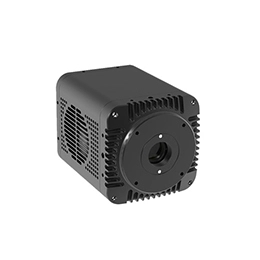In recent years, environmental monitoring has become a crucial aspect of safeguarding our planet's health. The technology employed in this field has advanced dramatically, allowing for more precise and reliable data collection. One such innovation is InGaAs Imaging, a powerful tool that is transforming how we observe and understand the environment. In this blog, we will delve into the numerous benefits of InGaAs Imaging in environmental monitoring.
InGaAs Imaging, short for Indium Gallium Arsenide Imaging, is a special type of technology used in cameras and sensors to detect light in the shortwave infrared (SWIR) spectrum, typically around 900 to 1700 nanometers. Unlike traditional silicon-based sensors, InGaAs Swir detectors are sensitive to wavelengths that lie beyond the visible spectrum, thus offering unique insights into environmental phenomena. This capability makes InGaAs Imaging highly valuable in various applications, including environmental monitoring, as it allows for the visualization and analysis of otherwise invisible spectral information.
One of the primary benefits of InGaAs Imaging in environmental monitoring is its ability to detect and analyze a wide range of environmental parameters.
Vegetation Health: InGaAs sensors can assess the health of vegetation by detecting specific wavelengths reflected by different plant pigments. This allows for the early identification of stress factors such as disease, drought, or pest infestation, leading to more effective and timely interventions.
Water Quality: Infrared wavelengths are particularly useful for monitoring water quality and detecting pollutants or contaminants. InGaAs Imaging systems can identify changes in water composition, such as the presence of harmful algae blooms or chemical spills, ensuring rapid response to potential hazards.
Airborne Particulate Matter: InGaAs technology can be used to track the concentration of particulate matter in the atmosphere. This is crucial for monitoring air quality, especially in urban areas, where pollutants can have significant health impacts.
Remote sensing has become an essential tool in environmental monitoring, providing critical data from even the most inaccessible regions. InGaAs Imaging enhances these capabilities in several ways:
High Sensitivity: InGaAs detectors are highly sensitive to light, allowing for the collection of detailed images even under low-light conditions. This feature is particularly useful for monitoring environmental changes during night-time or in heavily shadowed areas.
Wide Spectral Range: The ability of InGaAs sensors to operate in the SWIR spectrum adds depth to the data collected. This additional spectral information is invaluable for distinguishing between different materials and substances, facilitating more accurate mapping and analysis of environmental conditions.
Adaptability to Various Platforms: InGaAs Imaging systems can be mounted on a variety of platforms, including satellites, drones, and hand-held devices. This versatility ensures comprehensive coverage, enabling continuous monitoring of large areas with high precision.
Investing in InGaAs Imaging technology offers significant cost-effectiveness and longevity benefits:
Reduced Maintenance Costs: InGaAs sensor is known for their durability and resistance to harsh environmental conditions. This robustness translates to lower maintenance and replacement costs, making them a cost-effective solution for long-term monitoring projects.
High Data Quality: The superior sensitivity and accuracy of InGaAs Imaging improve the quality of data collected. High-quality data reduces the need for repeated measurements and minimizes errors, saving both time and resources.
Scalability and Flexibility: As environmental monitoring needs evolve, InGaAs Imaging systems can be easily scaled and upgraded. This flexibility ensures that the initial investment remains valuable over time, adapting to new challenges and requirements.
InGaAs Imaging is revolutionizing the field of environmental monitoring by providing unparalleled insights into various ecological parameters. Its ability to detect a wide range of wavelengths, coupled with enhanced remote sensing capabilities and cost-effectiveness, makes it an indispensable tool for preserving the health of our environment. As we continue to face pressing environmental challenges, embracing advanced technologies like InGaAs Imaging will be crucial for ensuring a sustainable future.
By harnessing the power of InGaAs Imaging, we can better understand and protect our natural world, making significant strides toward a healthier planet for generations to come.



